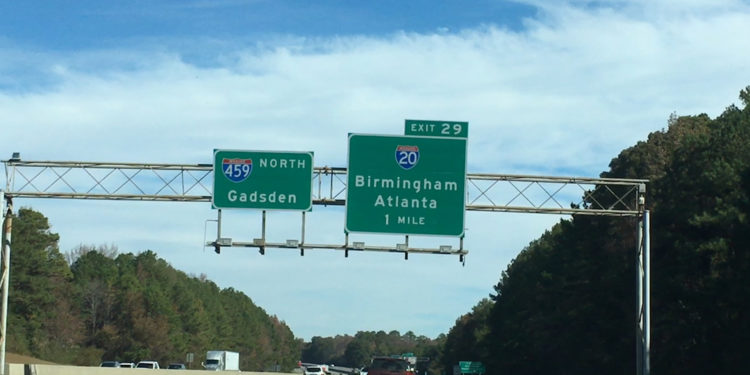Lisa Rhodes volunteers as a nurse with North Alabama’s Human Trafficking Taskforce in Huntsville, Alabama. Rhodes said human trafficking has grown to the second largest criminal enterprise in the world, only behind illegal drug and firearm sales.
According to Rhodes, some data estimates it is now a $150 billion dollar-a-year industry. “The reason is because you sell drugs or weapons once, but you can sell human beings over and over,” she said.
Unlike smuggling, where people pay for entry into a country, trafficked victims are forced to relocate for sex or a service.
“People do not consent to this. They are coerced, forced and lied to,” Rhodes said.
Human trafficking has spread across the entire U.S. but specifically in the southeast in recent years. Other hotspots include the east and west coast. “It occurs everywhere on a daily basis. Our Polaris statistics show that. It happens in rural places and in cities,” Rhodes said.
Alabama in particular has become a popular spot for human trafficking in recent years. Rhodes said the state’s highways offer easy accessibility for traffickers traveling across the southeast and to other parts of the country.
“We are sort of a hub because of all the major interstates we have. So, victims come to Birmingham and are forced to have sex with however many people and then could be transported to Huntsville, Nashville, over to Chattanooga, down to Montgomery and then Mobile,” she said.
Traffickers commonly prey on the homeless, abused children or adults, the mentally and physically disabled as well as the LGBTQ community.
“Often they are demoralized in our society so they are more vulnerable but anybody can be a victim,” Rhodes said.
Likewise, anybody can be a trafficker.
“Men are not just the buyers. There are women who are buyers as well. It can be young and older people and all socio-economic groups. This is about money,” she said.
Oftentimes, traffickers also target foreigners and immigrants for labor trafficking with promises of a job, education or money. However, after arriving in the U.S., traffickers then force them to work in farms, manufacturing or as domestic servants for little money. Frequently, victims are trapped in an apartment with twenty or more people.
“It is not just adults that are labored trafficked but children also,” she said.
According to Rhodes, victims become entangled with traffickers by either force, fraud or coercion. Victims 18 years and older must prove
in court that one of these scenarios occurred to them. Traffickers often threaten victims into compiling. With fraud, traffickers lure victims with false promises of a better life or may coerce victims by enticing them with expensive clothes, an apartment or jewelry.
Victims of human trafficking usually avoid eye contact and someone may speak for them. They may or may not have marks or bruises as well as tattoos or barcodes printed on their bodies. They appear anxious and if a minor may miss school for extended periods of time.
Rhodes urges bystanders against rescuing somebody they suspect is being trafficked and instead contact law enforcement or human trafficking hotline.
“Traffickers consider this person their property. They would just as soon shoot you. They don’t see this person as a human being,” she said





